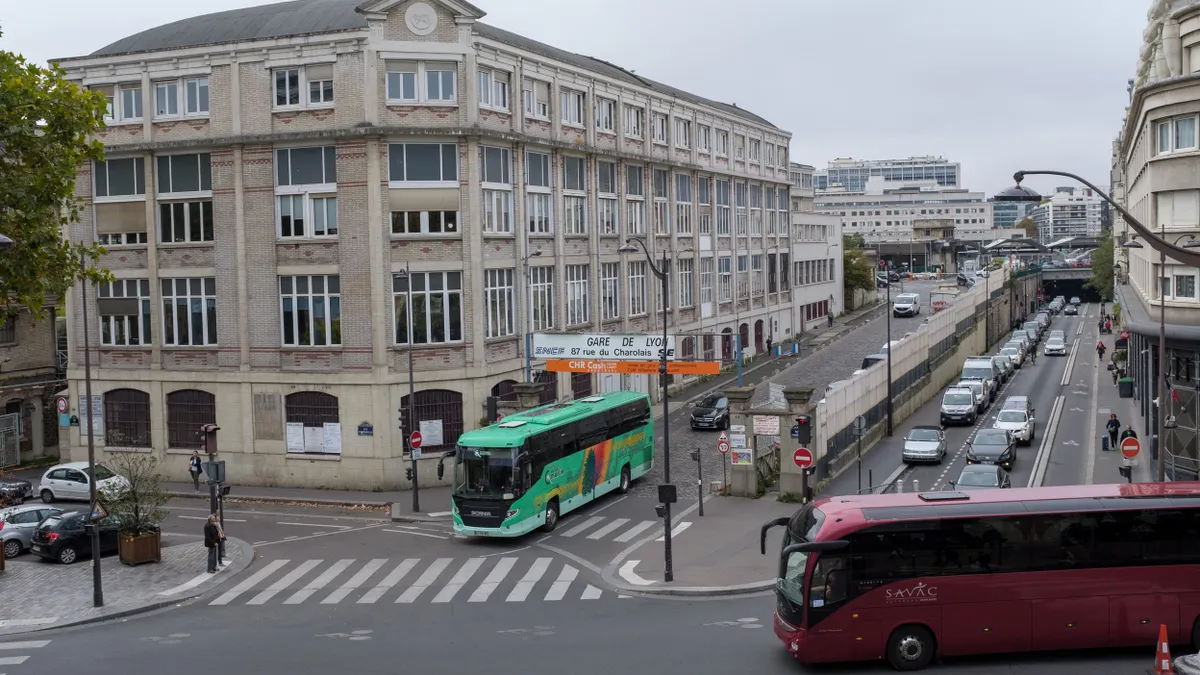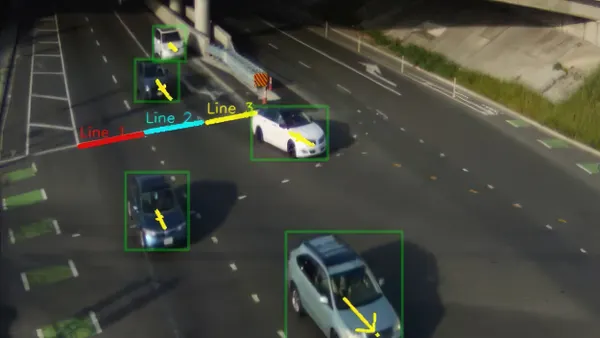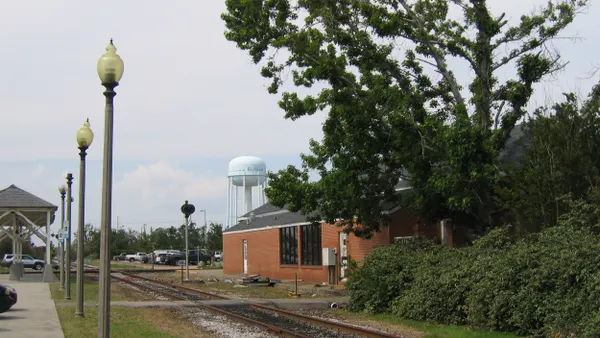Dive Brief:
- Crosswalks that span a larger distance from one side of the street to the other increase the likelihood of a pedestrian being struck by a vehicle, according to a study researchers at the Center for Urban Science and Progress at the New York University Tandon School of Engineering released last month.
- The study looked at some 49,000 street crossings in Paris, San Francisco and Irvine, California — cities with vastly different histories and pedestrian environments.
- “Crossing distance is measurable at the scale of entire cities, is fundamental to pedestrian safety and is addressable with low-tech traffic calming,” said Marcel Moran, lead author of the study.
Dive Insight:
The number of pedestrians killed in U.S. traffic collisions rose 77% from 2010 to 2021 while the number killed in Europe declined 20% from 2010 to 2018. The NYU study examined the relationship between a city’s crosswalk length and its rate of pedestrian collisions. The study found the average crossing distance in Paris to be 26 feet versus 43 feet in San Francisco and 58 feet in Irvine.
“A fundamental aspect of pedestrian safety is the length of a crosswalk for a pedestrian,” Moran explained. “The longer that crossing is, the more you're mathematically exposed to any type of road traffic.”
Pedestrian crossings that were longer than average in each city saw more collisions: an increase of 15% in Paris, 23% in San Francisco and 43% in Irvine. One in five crosswalks in Irvine is more than 70 feet long.
Cities can take simple countermeasures to enhance pedestrian safety, Moran said. Pedestrian crossing signals, lower speed limits, signage, speed tables and pedestrian refuge islands in the median of very wide roads are “incremental steps,” he said. “None of these things are reducing car access, but they're all trying to make pedestrians not feel so out-of-scale with the environment.”
On a broader level, planners can use street-level data such as that the study compiled to target mitigation strategies for wide road crossings that are most likely to create a higher danger for pedestrians. Moran pointed out that long crossings can be even more daunting for those with mobility challenges. “We want a walkable environment that matches Americans’ needs across their lifespan and abilities,” he said.
Building on this initial research, Moran is looking to conduct a larger study encompassing the 100 largest cities in the U.S. “If we can see the relationship between crashes and [crossing] distance at the level of 100 cities, not just three cities, I think that would create even more incentive for cities to take this metric seriously.”











